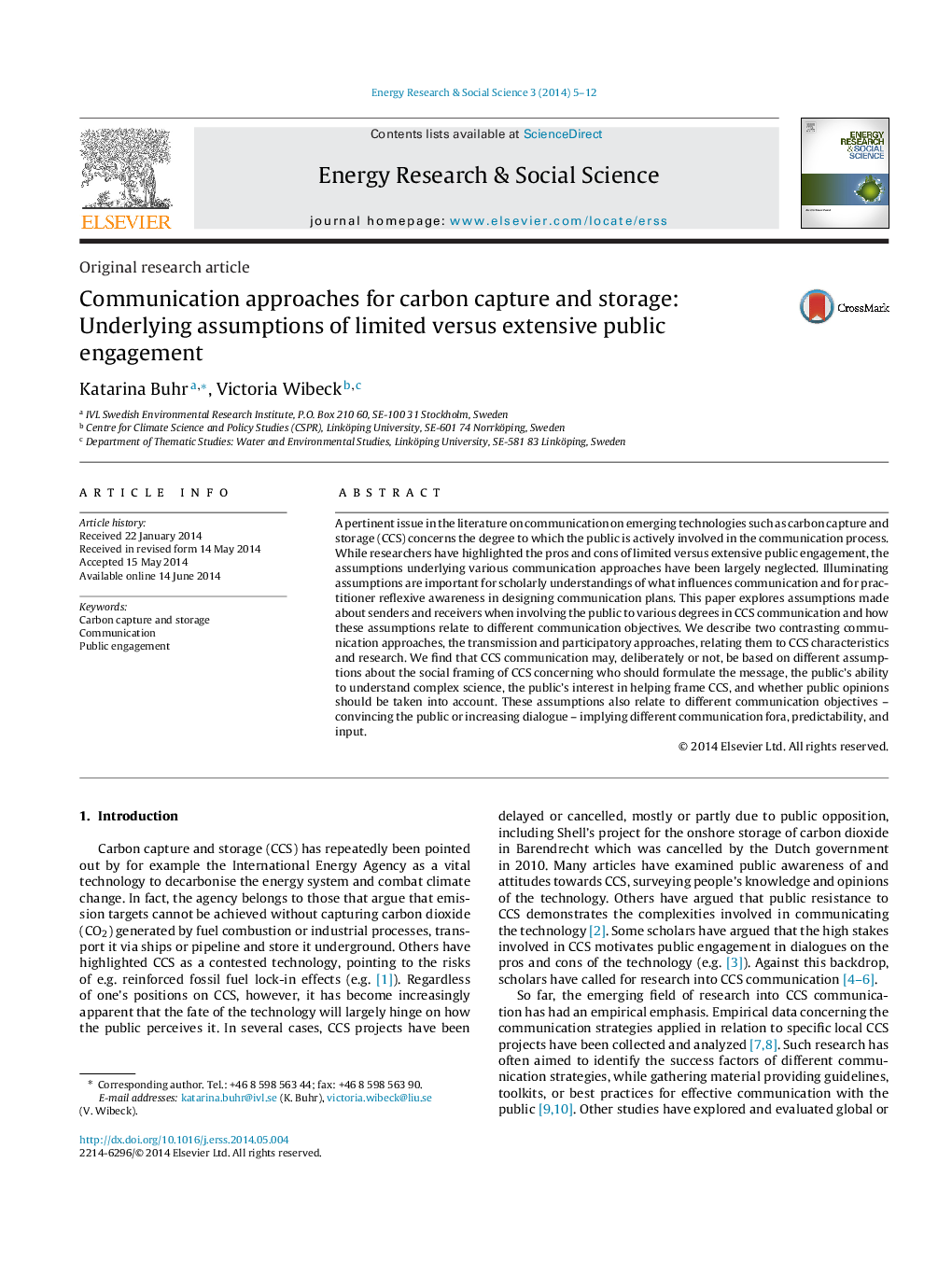| Article ID | Journal | Published Year | Pages | File Type |
|---|---|---|---|---|
| 108167 | Energy Research & Social Science | 2014 | 8 Pages |
•CCS communication follows a transmission or participatory approach.•These approaches are based on different assumptions about social framing of CCS.•These approaches relate to different objectives: convincing the public or increasing dialogue.•These approaches imply different communication fora, predictability, and inputs.
A pertinent issue in the literature on communication on emerging technologies such as carbon capture and storage (CCS) concerns the degree to which the public is actively involved in the communication process. While researchers have highlighted the pros and cons of limited versus extensive public engagement, the assumptions underlying various communication approaches have been largely neglected. Illuminating assumptions are important for scholarly understandings of what influences communication and for practitioner reflexive awareness in designing communication plans. This paper explores assumptions made about senders and receivers when involving the public to various degrees in CCS communication and how these assumptions relate to different communication objectives. We describe two contrasting communication approaches, the transmission and participatory approaches, relating them to CCS characteristics and research. We find that CCS communication may, deliberately or not, be based on different assumptions about the social framing of CCS concerning who should formulate the message, the public's ability to understand complex science, the public's interest in helping frame CCS, and whether public opinions should be taken into account. These assumptions also relate to different communication objectives – convincing the public or increasing dialogue – implying different communication fora, predictability, and input.
